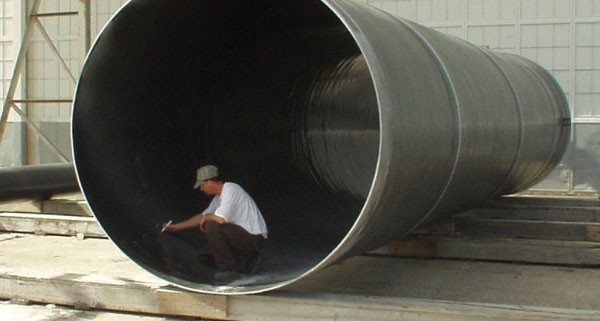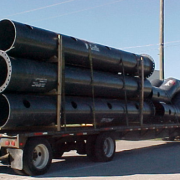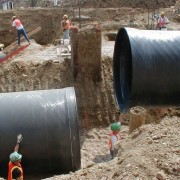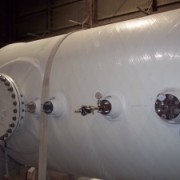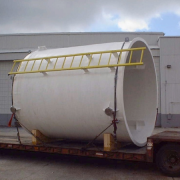FRP – Fiberglass Reinforced Plastic for Corrosion Resistance
Fiber-Glass-Reinforced plastics (FRP) are used for many varied applications; from boats and bathtubs to missiles. Examples of industrial and chemical equipment currently fabricated out of fiberglass-reinforced plastics include tanks and vessels, pipe, ducting, hoods, fans, scrubbers, stacks, grating, and specialty fabrications. One of the fastest growing areas is the use of FRP for pollution-control equipment.
What is FRP?
The term FRP, which is common throughout the industry, refers to plastic that has been reinforced with glass fibers. Many reinforcements can be used for plastic materials-including polyester fibers, carbon fibers and, of course, glass fibers. For corrosion-resistant equipment, most of the applications normally involve the use of glass fibers.
Glass fibers can be added to virtually all of the thermosplastic and thermoset resins. For corrosion resistant equipment, the resins used are primarily those of the thermosetting type. These are resins that, once they have “hardened,” remain in their cured configuration when subjected to heat-up to their distortion temperature or the temperature at which they will degrade. Examples of thermoset resins include the epoxies, polyesters, and vinyl-esters. There are other thermosetting materials, but these four are used in the vast majority of applications for fiber-glass reinforced plastics. The term “polyester” is a generic one that refers to a wide range of materials. It can include everything from a general-purpose resin used in boats and bathtubs to the most exotic, high-temperature corrosion resins. For corrosion-resistant equipment, specialized corrosion-resistant-grade resins are available.
How is FRP fabricated? What are the advantages of FRP? What design considerations must be considered in using equipment made of FRP? And finally, what are the considerations in buying corrosion-resistant equipment? To find out, click the button below to download our updated brochure.

